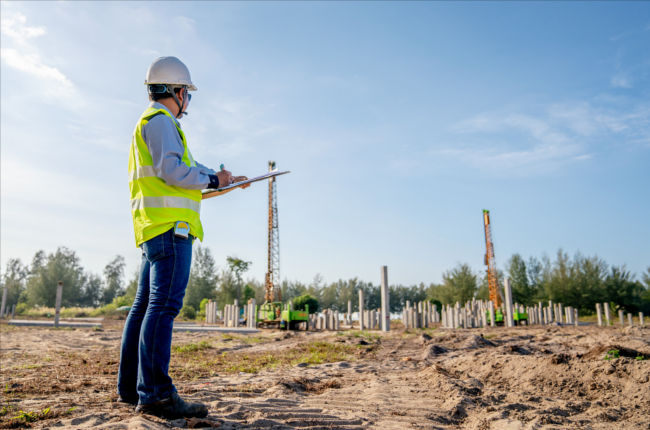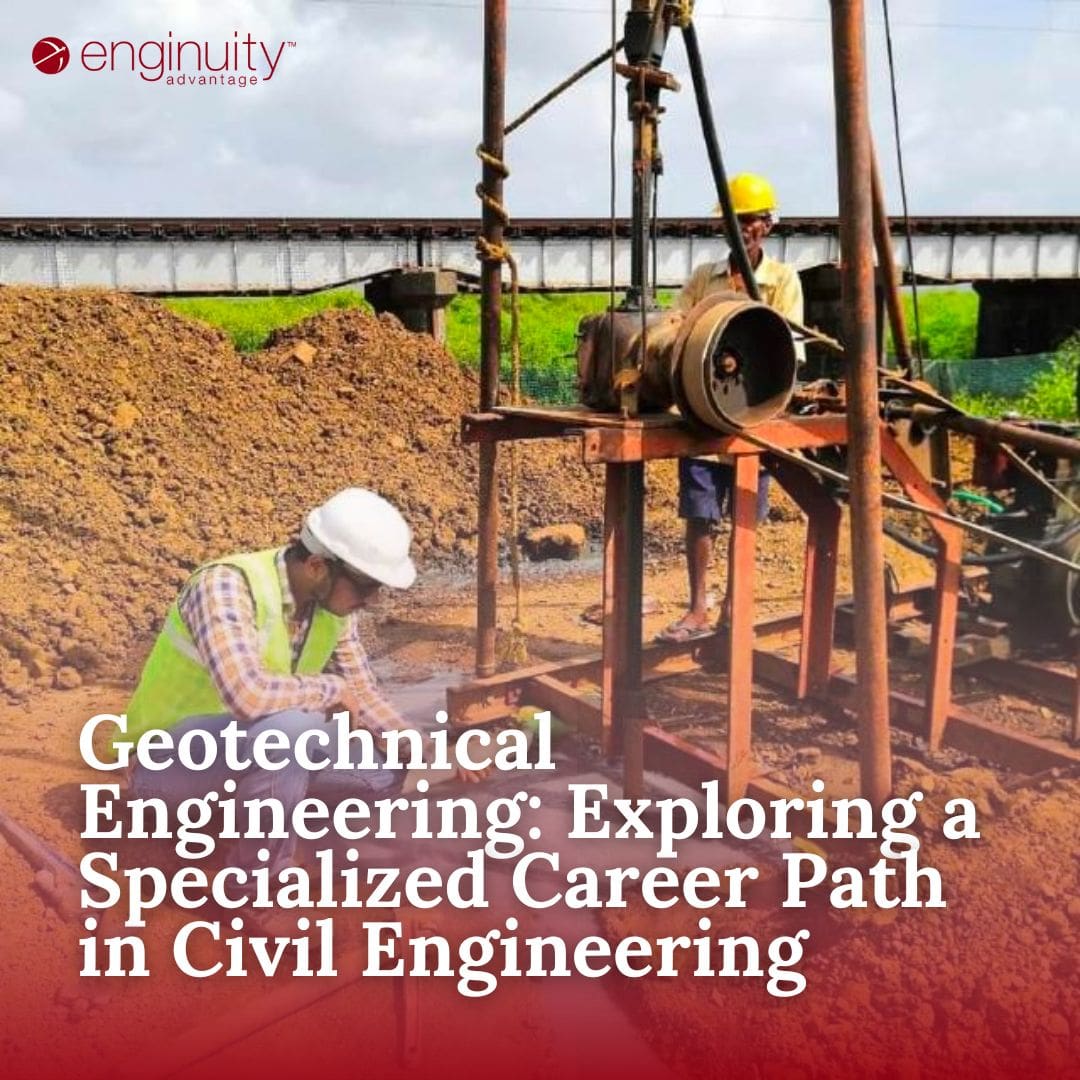Engineer of Record: What You Need to Know About Their Responsibilities and Influence
Engineer of Record: What You Need to Know About Their Responsibilities and Influence
Blog Article
The Importance of Dirt Evaluation and Website Examination in the Geotechnical Sector: Ensuring Safety and Stability in Civil Design
In the geotechnical industry, dirt analysis and website examination are foundational components that underpin the safety and security of civil engineering tasks. These processes not just expose the features of subsurface materials however additionally inform vital decisions pertaining to design and building and construction methods. By thoroughly recognizing soil homes, designers can preemptively resolve prospective challenges, inevitably protecting architectural integrity. The ramifications of these examinations expand beyond instant task success; they can influence long-lasting sustainability and durability. As we discover the complexities of these techniques, it becomes evident that their significance can not be overemphasized.
Recognizing Soil Residences
In the world of geotechnical engineering, a comprehensive understanding of soil residential or commercial properties is extremely important for educated decision-making and reliable task style. The characterization of soil involves the assessment of various physical and mechanical residential properties, such as grain dimension circulation, plasticity, shear, communication, and permeability toughness. These residential or commercial properties dictate how soil behaves under different loading problems and ecological influences, making them critical for evaluating website viability for building tasks.
Dirt classification systems, such as the Unified Dirt Category System (USCS) and the AASHTO category, provide structures for organizing soils based upon their qualities. This classification aids engineers in forecasting habits under tension, water flow, and settlement, thus affecting layout selections and building and construction techniques.
Additionally, the communication between soil and bordering structures is a crucial consideration in geotechnical engineering. Recognizing soil homes helps determine prospective obstacles, such as liquefaction in earthquake-prone locations or extreme settlement in soft dirts. By thoroughly assessing these residential or commercial properties, geotechnical engineers can make certain the security, security, and durability of structures, ultimately contributing to the general strength of civil design tasks.
Methods of Dirt Evaluation

In-situ tests include strategies such as Standard Penetration Examinations (SPT), Cone Penetration Tests (CPT), and vane shear tests. SPT evaluates the resistance of soil to penetration, supplying data on thickness and strength, while CPT measures dirt resistance and pore pressure, generating continuous profiles of soil stratigraphy. Vane shear tests are particularly beneficial for assessing the shear toughness of natural dirts.
Research laboratory tests enhance these in-situ evaluations and include tasting dirt for controlled screening. Typical laboratory methods consist of Atterberg limitations, which determine the plasticity features of fine-grained dirts, and compaction examinations, which analyze moisture-density connections. Added examinations, such as triaxial compression and unconfined compression tests, are conducted to assess the shear toughness of dirt examples under various conditions.
Function of Website Investigation
Website investigation plays a pivotal duty in the geotechnical engineering procedure, working as the foundation for comprehending subsurface conditions. This detailed evaluation involves systematic expedition of dirt and rock homes, groundwater degrees, and various other geological attributes that affect job safety and security and security.
Generally, site investigations incorporate a selection of methods, including drilling boreholes, sampling, and in-situ screening. These methods offer crucial information on the mechanical and physical attributes of the ground, informing engineers about prospective obstacles such as dirt settlement, birthing ability, and slope security.
In addition, website investigation assists in the recognition of harmful materials and contaminants, making it possible for the execution of appropriate removal procedures. By developing an exact subsurface account, website examinations help to reduce threats related to building and construction, making sure that jobs comply with safety and security standards and policies.
The findings from a complete website investigation not just guide layout choices but also influence construction approaches and timelines. In recap, the relevance of site investigation can not be overstated; it is a vital action in the geotechnical continue reading this design procedure, preparing for effective job execution while prioritizing public safety and security and environmental integrity.
Influence On Task Layout
An extensive understanding of soil qualities substantially affects job style in the geotechnical industry. Dirt evaluation informs engineers regarding the mechanical residential or commercial properties, composition, and actions of the ground, which are important elements in determining the usefulness and security of a building job. Accurate information on dirt permeability, toughness, and compressibility enable the advancement of reliable foundation designs, making sure that structures are properly sustained and steady throughout their lifespan.
Moreover, the existence of impurities or unsteady dirt layers can prompt alterations in project layout, such as selecting alternative building approaches or products. This aggressive technique minimizes dangers associated with dirt negotiation, too much loading, or lateral motion, hence securing both the honesty of the framework and public security.
The assimilation of soil analysis right into project style additionally helps with conformity with ecological considerations and regulatory demands. By dealing with soil-related obstacles early in the design process, designers can enhance source allocation and decrease possible hold-ups and expenses linked with unpredicted website problems. Eventually, thorough soil analysis boosts the general high quality and durability of civil design projects, leading to even more sustainable and resilient framework.
Study and Examples
Demonstrating the vital role of soil analysis in the geotechnical market, numerous situation researches highlight its influence on task results. One remarkable instance is the building and construction of a high-rise building in downtown Los Angeles, where extensive soil testing exposed unstable subsurface conditions. geo tech engineer. By identifying the visibility of expansive clay, engineers were able to revamp the structure, including deep pilings that ensured stability and safety, eventually protecting against prospective structural failings

Last but not least, a dam job in the Southeast dealt with delays as a result of unexpected dirt erosion concerns. Thorough dirt evaluation permitted designers to implement efficient stabilization techniques, making sure that the dam met security policies while adhering to the task timeline. These situations emphasize the necessity of complete soil analysis and site investigation, highlighting their vital duty in accomplishing secure and effective civil engineering tasks.
Final Thought
In conclusion, soil evaluation and site investigation are basic elements of the geotechnical sector, playing a vital function in guaranteeing the safety and stability of civil design jobs. By supplying crucial information on soil buildings and subsurface conditions, these processes inform structure layout and building and construction approaches. In addition, detailed investigations add to danger recognition and threat mitigation, inevitably boosting the durability and resilience of structures while optimizing resource allotment throughout the job lifecycle.
In the geotechnical sector, soil evaluation and website investigation are fundamental aspects that underpin the safety and security and security of civil design projects. Comprehending dirt residential properties aids identify possible difficulties, such as liquefaction in earthquake-prone locations or too much negotiation in soft dirts. SPT evaluates the resistance of dirt to penetration, offering data on thickness her response and strength, while CPT determines soil resistance and pore pressure, generating continuous profiles of soil stratigraphy. These situations underscore the need of complete dirt evaluation and website examination, highlighting their vital role in accomplishing successful and safe civil engineering projects.
In conclusion, soil evaluation and site investigation are fundamental parts of the geotechnical market, playing a vital duty in making sure the safety and security and security of civil engineering tasks.
Report this page